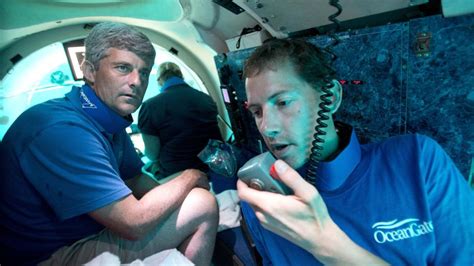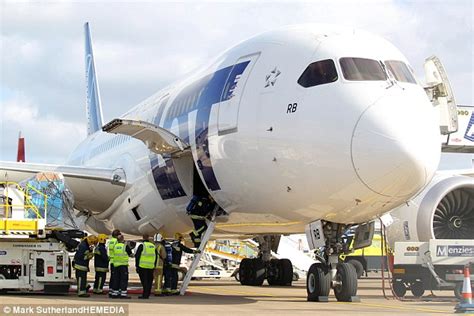
OceanGate’s former chief pilot, David Lochridge, alleges he was terminated after raising serious safety concerns about the Titan submersible’s experimental design and lack of proper testing, particularly regarding its carbon fiber hull. Lochridge claims his concerns, documented in a 2018 engineering report, were dismissed, and he was ultimately “cut out” of the project, leading to his wrongful termination lawsuit.
David Lochridge, who served as OceanGate’s Director of Marine Operations and chief pilot for the Titan submersible project, claims he was fired after voicing significant apprehension regarding the vessel’s safety, according to court documents and a recent interview. Lochridge’s concerns primarily centered on the experimental design of the Titan, specifically the untested nature of its carbon fiber hull and the lack of sufficient non-destructive testing. He believed that the viewport, certified for a depth of only 1,300 meters, posed an unacceptable risk at the submersible’s intended operational depth of 4,000 meters (13,123 feet).
In a 2018 engineering report, Lochridge detailed his worries, stating that OceanGate’s refusal to conduct a proper scan of the hull to detect flaws could expose passengers to “extreme danger.” He argued that relying solely on acoustic monitoring to detect potential hull failures was insufficient and that a more comprehensive, non-destructive testing method was crucial. His recommendations were reportedly disregarded by OceanGate CEO Stockton Rush, who tragically perished aboard the Titan submersible during its implosion in June 2023.
Lochridge’s legal battle with OceanGate began after his termination. He filed a wrongful termination claim, alleging he was fired for raising safety concerns. OceanGate, in turn, accused Lochridge of breaching his employment contract and divulging confidential information. The case was eventually settled out of court, the terms of which remain confidential. However, Lochridge’s initial allegations have resurfaced in light of the Titan tragedy, raising further questions about OceanGate’s safety culture and its approach to risk management.
The former pilot’s assertions paint a picture of a company that prioritized innovation and exploration over established safety protocols. According to Lochridge, OceanGate was unwilling to invest in industry-standard non-destructive testing methods, opting instead for a less reliable acoustic monitoring system. He maintained that the company’s leadership, particularly CEO Stockton Rush, was dismissive of his concerns and prioritized cost-cutting measures over passenger safety. Lochridge further alleges that he was pressured to approve the submersible for manned voyages despite his reservations.
The repercussions of OceanGate’s decisions are now starkly apparent. The implosion of the Titan submersible, which resulted in the deaths of all five individuals on board, has triggered widespread scrutiny of the company’s safety practices and regulatory oversight of the deep-sea exploration industry. Lochridge’s earlier warnings underscore the potential consequences of neglecting safety protocols and dismissing expert opinions in the pursuit of technological advancement.
Lochridge also raised concerns about the flammability of materials used inside the submersible. In his assessment, the materials posed a fire hazard under high pressure, which could lead to catastrophic consequences given the enclosed environment of the Titan. This concern, alongside the insufficient viewport certification and inadequate hull testing, contributed to his overall assessment that the submersible was not safe for manned dives to the Titanic wreckage.
The controversy surrounding OceanGate highlights a fundamental tension between innovation and safety. While the company aimed to push the boundaries of deep-sea exploration, its approach to risk management appears to have been inadequate. The Titan tragedy serves as a cautionary tale about the importance of adhering to established safety standards, particularly in high-risk environments. It also underscores the need for robust regulatory oversight to ensure that companies operating in unregulated spaces prioritize safety over profit and ambition.
The revelations from Lochridge’s allegations and the subsequent investigation into the Titan incident have prompted calls for greater accountability within the deep-sea exploration industry. Experts argue that existing regulations are insufficient to address the unique challenges posed by privately owned submersibles operating in international waters. There is growing pressure on regulatory bodies to develop more comprehensive safety standards and enforcement mechanisms to prevent similar tragedies from occurring in the future. The investigation into the Titan’s implosion is ongoing and is expected to shed further light on the factors that contributed to the disaster. It will also likely examine the role of regulatory gaps and the extent to which OceanGate’s practices deviated from industry norms.
The Titan submersible, designed to carry passengers to the wreck of the Titanic, represented a significant departure from traditional submersible designs. Its carbon fiber hull, intended to reduce weight and manufacturing costs, was a key point of contention. While carbon fiber has numerous advantages in terms of strength-to-weight ratio, its use in deep-sea submersibles is relatively novel and requires rigorous testing and quality control measures. Lochridge’s concerns about the lack of non-destructive testing highlighted the potential for undetected flaws in the hull, which could compromise its structural integrity under extreme pressure.
The incident has also brought into focus the role of classification societies, independent organizations that assess and certify the safety of marine vessels. OceanGate chose not to have the Titan classified, arguing that the process was overly burdensome and stifled innovation. This decision has been widely criticized, as classification societies provide an independent layer of oversight and help ensure that vessels meet established safety standards. Had the Titan been classified, it is possible that the safety concerns raised by Lochridge would have been addressed more thoroughly.
The legacy of the Titan tragedy extends beyond the immediate loss of life. It has raised fundamental questions about the ethics of adventure tourism, the responsibilities of innovators, and the role of regulation in mitigating risk. As the deep-sea exploration industry continues to evolve, it is crucial that lessons are learned from this disaster to prevent future tragedies. The emphasis must be on prioritizing safety, adhering to established protocols, and fostering a culture of transparency and accountability. Only then can the potential benefits of deep-sea exploration be realized without jeopardizing human lives.
The families of the victims have filed lawsuits against OceanGate, alleging negligence and wrongful death. These lawsuits seek to hold the company accountable for its actions and to provide compensation for the immense suffering caused by the tragedy. The legal proceedings are likely to be protracted and complex, involving extensive discovery and expert testimony. The outcome of these lawsuits could have significant implications for the future of the deep-sea exploration industry and could lead to stricter regulations and greater oversight.
The Titan incident serves as a stark reminder of the inherent risks associated with exploring extreme environments. The deep sea is a hostile and unforgiving environment, and even the most advanced technology is vulnerable to unforeseen challenges. As humans venture further into the unknown, it is essential to approach these endeavors with humility, caution, and a deep respect for the power of nature. The pursuit of knowledge and adventure should never come at the expense of human safety.
The long-term impact of the Titan tragedy on the deep-sea exploration industry remains to be seen. It is likely that the incident will lead to a period of reflection and reassessment, with a greater emphasis on safety and regulation. The industry may also face increased scrutiny from the public and the media, which could affect its ability to attract investment and customers. Ultimately, the future of deep-sea exploration will depend on the ability of the industry to demonstrate that it can operate safely and responsibly.
The disaster has prompted calls for a more unified global regulatory framework for submersible operations. Currently, there is no single international body that oversees the design, construction, and operation of privately owned submersibles. This lack of harmonization can lead to inconsistent safety standards and enforcement, creating opportunities for companies to circumvent regulations. A more comprehensive and coordinated approach to regulation is needed to ensure that all submersibles operating in international waters meet a minimum level of safety.
The technology used in deep-sea submersibles is constantly evolving, and regulators must keep pace with these advancements. This requires a continuous process of research and development, as well as ongoing dialogue between regulators, industry experts, and the scientific community. Regulations should be flexible enough to accommodate new technologies while still ensuring that safety remains the top priority.
The investigation into the Titan implosion is examining a wide range of factors, including the design and construction of the submersible, the training and experience of the crew, the operational procedures followed by OceanGate, and the regulatory oversight in place at the time of the incident. The investigation is being conducted by multiple agencies, including the U.S. Coast Guard and the Transportation Safety Board of Canada. The findings of the investigation are expected to be released in the coming months and will likely provide valuable insights into the causes of the disaster.
In the wake of the Titan tragedy, there has been increased public awareness of the risks associated with deep-sea exploration. Many people have expressed surprise at the lack of regulation in the industry and have called for greater transparency and accountability. The incident has also sparked a broader debate about the ethics of adventure tourism and the responsibilities of companies that offer these types of experiences.
The families of the victims are seeking answers and closure. They want to understand what happened to the Titan and why, and they want to ensure that lessons are learned from the tragedy to prevent similar incidents from occurring in the future. Their pursuit of justice is likely to continue for years to come, and their voices will play a key role in shaping the future of the deep-sea exploration industry.
The Titan submersible was not certified by any recognized classification society, a fact that drew considerable criticism following the implosion. Classification societies like the American Bureau of Shipping (ABS) and DNV (Det Norske Veritas) set standards for the design, construction, and operation of marine vessels. While OceanGate claimed that seeking classification would stifle innovation, critics argue that this decision compromised safety. Had the Titan been certified, it would have been subject to independent inspections and audits, which could have identified and addressed potential safety hazards.
The company’s decision to use a carbon fiber hull, while innovative, raised concerns about its suitability for deep-sea applications. Carbon fiber is a strong and lightweight material, but it is also susceptible to damage from impacts and fatigue. Unlike traditional submersible hulls made of titanium or steel, carbon fiber does not exhibit visible signs of stress before failure. This makes it difficult to detect potential problems before they become catastrophic. Lochridge’s concerns about the lack of non-destructive testing were directly related to the challenges of inspecting carbon fiber hulls.
The viewport on the Titan submersible was another source of concern. It was reportedly certified for a depth of only 1,300 meters, while the submersible was intended to operate at depths of up to 4,000 meters. This discrepancy raised questions about the viewport’s ability to withstand the immense pressure at the Titanic wreck site. Lochridge specifically warned about the potential for the viewport to fail, posing a significant risk to the occupants of the submersible.
OceanGate’s safety culture has come under intense scrutiny in the aftermath of the Titan tragedy. Whistleblowers and former employees have alleged that the company prioritized innovation and cost-cutting over safety. These allegations suggest that there was a systemic disregard for safety protocols and a reluctance to address potential hazards. A strong safety culture is essential for any organization operating in a high-risk environment, and the lack thereof at OceanGate may have contributed to the disaster.
The incident has highlighted the need for greater transparency in the deep-sea exploration industry. Companies should be required to disclose more information about the design, construction, and operation of their submersibles. This would allow for greater public scrutiny and could help to identify potential safety hazards before they lead to accidents. Transparency is also essential for building trust between companies, regulators, and the public.
The Titan tragedy has had a profound impact on the families of the victims. They have lost loved ones in a preventable accident, and they are now seeking justice and accountability. Their grief is compounded by the fact that the disaster could have been avoided if OceanGate had prioritized safety. The families deserve answers, and they deserve to see that steps are taken to prevent similar tragedies from occurring in the future.
The future of deep-sea exploration is uncertain. The Titan tragedy has cast a shadow over the industry, and it may take years for it to recover. However, the potential benefits of deep-sea exploration are significant, including scientific discovery, resource exploration, and technological innovation. If the industry can learn from the mistakes of the past and prioritize safety, it may still have a bright future.
The regulatory landscape for submersible operations is complex and fragmented. Different countries have different regulations, and there is no single international body that oversees the industry. This lack of harmonization can create loopholes that companies can exploit. A more unified and comprehensive regulatory framework is needed to ensure that all submersibles operating in international waters meet a minimum level of safety.
The technology used in deep-sea submersibles is constantly evolving, and regulations must keep pace with these advancements. This requires a continuous process of research and development, as well as ongoing dialogue between regulators, industry experts, and the scientific community. Regulations should be flexible enough to accommodate new technologies while still ensuring that safety remains the top priority.
The investigation into the Titan implosion is examining a wide range of factors, including the design and construction of the submersible, the training and experience of the crew, the operational procedures followed by OceanGate, and the regulatory oversight in place at the time of the incident. The investigation is being conducted by multiple agencies, and the findings are expected to be released in the coming months.
In the wake of the Titan tragedy, there has been increased public awareness of the risks associated with deep-sea exploration. Many people have expressed surprise at the lack of regulation in the industry and have called for greater transparency and accountability.
The families of the victims are seeking answers and closure. They want to understand what happened to the Titan and why, and they want to ensure that lessons are learned from the tragedy to prevent similar incidents from occurring in the future.
Frequently Asked Questions (FAQ):
1. What were David Lochridge’s primary safety concerns regarding the Titan submersible?
David Lochridge’s main concerns centered on the experimental design of the Titan, specifically the untested nature of its carbon fiber hull and the lack of sufficient non-destructive testing. He also expressed concerns about the viewport, which was only certified for a depth of 1,300 meters, while the submersible was intended to operate at depths of 4,000 meters. Additionally, he cited the flammability of internal materials as a significant hazard.
2. What action did David Lochridge take after identifying these safety concerns, and what was the outcome?
Lochridge documented his concerns in a 2018 engineering report and presented them to OceanGate management. He recommended more comprehensive non-destructive testing of the hull. After his concerns were allegedly dismissed, he was terminated. He then filed a wrongful termination lawsuit, claiming he was fired for raising safety concerns. The case was eventually settled out of court.
3. How did OceanGate respond to David Lochridge’s safety concerns?
According to Lochridge, OceanGate dismissed his concerns and refused to invest in industry-standard non-destructive testing methods. He claims that CEO Stockton Rush was dismissive and prioritized cost-cutting measures over safety. OceanGate, in turn, accused Lochridge of breaching his employment contract and divulging confidential information in their legal response to his wrongful termination claim.
4. Why was the Titan submersible not classified by a recognized classification society?
OceanGate chose not to have the Titan classified, arguing that the process was overly burdensome and stifled innovation. Classification societies provide independent oversight and help ensure that vessels meet established safety standards. This decision has been widely criticized as a potential contributing factor to the safety deficiencies of the submersible.
5. What is the current status of the investigation into the Titan submersible implosion?
The investigation into the Titan implosion is ongoing and is being conducted by multiple agencies, including the U.S. Coast Guard and the Transportation Safety Board of Canada. The investigation is examining a wide range of factors, including the design and construction of the submersible, the training and experience of the crew, the operational procedures followed by OceanGate, and the regulatory oversight in place at the time of the incident. The findings are expected to be released in the coming months.









